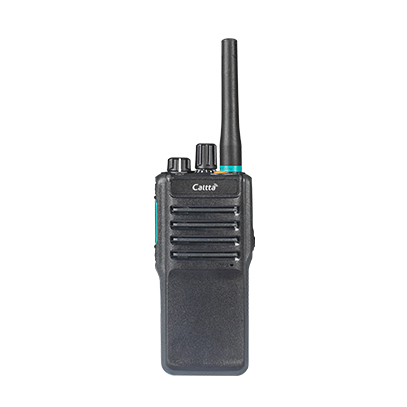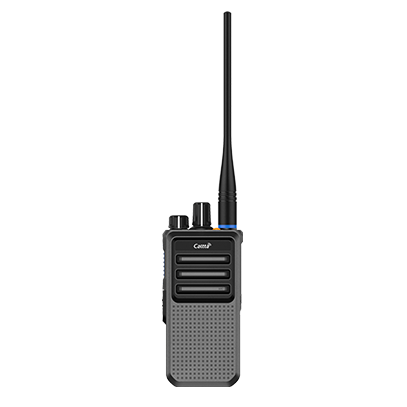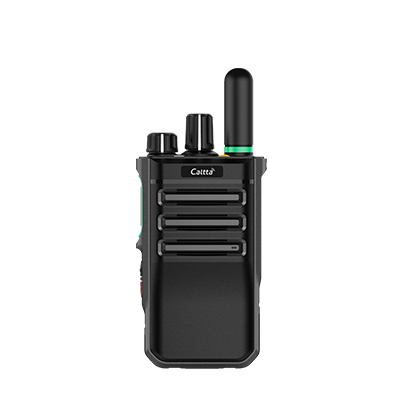Digital radio communication system walkie-talkies can communicate without any network support, with no call charges, suitable for relatively fixed and frequent communication occasions. It consists of a shell, main unit, battery, belt clip, cradle charger, and antenna. There are three types of walkie-talkies: analog walkie-talkies, digital walkie-talkies, and IP walkie-talkies.
The phase-locked loop and voltage-controlled oscillator (VCO) generate RF carrier signals for transmission. After buffering, excitation amplification and power amplification, an RF output with the rated power is produced, which is then transmitted through an antenna low-pass filter to suppress harmonic components.
The reception part mixes the RF amplified signal and the first local oscillator signal from the phase-locked loop frequency synthesizer circuit at the first mixer to generate the first intermediate frequency signal. After further eliminating adjacent channel interference via a crystal filter, the first intermediate frequency signal enters an intermediate frequency processing chip and mixes again with the second local oscillator signal to produce the second intermediate frequency signal. After a ceramic filter removes unwanted signals, the second intermediate frequency signal is amplified and demodulated to generate the audio signal. The audio signal enters a circuit for amplification, bandpass filtering, and de-emphasis, and then enters a volume control circuit and a power amplifier to drive the speaker to obtain the required information.
The human voice is converted into an audio electrical signal by a microphone.
The signal generated by the CPU is amplified and adjusted, and then enters the voltage-controlled oscillator for modulation. After demodulation, a low-frequency signal is obtained. A portion of it passes through an amplification and sub-audio bandpass filter for filtering and shaping, enters the CPU, and is compared with the preset value. The results control the audio power amplifier and speaker output. That is, if it is the same as the preset value, the speaker is turned on; otherwise, the speaker is turned off.
Digital radio communication walkie-talkies are not restricted by networks. In places where the network is not covered, walkie-talkies can easily communicate with users.
Walkie-talkies provide one-to-one, one-to-many communication methods, with simplified operation and increased freedom in communication, especially in cases of emergency dispatch and collective cooperation tasks, these characteristics are extremely important.
Low communication costs. Digital radio communication walkie-talkies are terminal devices for cluster communication, which not only can serve as terminal devices for cluster communication, but also as professional wireless communication tools in mobile communication.
The coverage of digital radio communication walkie-talkies is relatively wide. Here, we refer to the wireless communication devices operating in the ultra-short wave band as wireless walkie-talkies. Actually, according to relevant national standards, they should be called ultra-short wave frequency modulation wireless telephones. People usually call handheld wireless telephones with small power and small volume "walkie-talkies", and wireless telephones with large power and volume, such as vehicle-mounted (shipborne) transportation or fixed-use wireless telephones, as "transceivers", such as vehicle-mounted transceivers (vehicle-mounted radios), ship transceivers, fixed transceivers, base stations, and repeaters, etc.
Copyright © Caltta Technologies Co., Ltd. All Rights Reserved.
+86-0755-86556659







